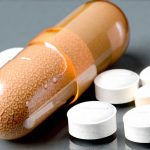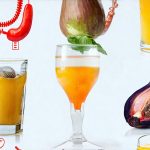For individuals dealing with overactive bladder (OAB) or interstitial cystitis (IC), finding relief often extends beyond medication and lifestyle adjustments – it delves into surprisingly everyday choices like the sweeteners we use. Many common sweeteners, while seemingly harmless, can significantly exacerbate bladder symptoms for sensitive individuals. This isn’t about eliminating sweetness altogether; it’s about making informed decisions to minimize irritation and improve quality of life. Understanding which sweeteners are more likely to cause problems, and exploring viable alternatives, is a crucial step toward managing these conditions effectively. The goal isn’t deprivation but rather mindful consumption that supports bladder health.
The challenge lies in the individual nature of bladder sensitivities. What triggers one person may not affect another. However, certain sweeteners have demonstrably higher potential for irritation due to their chemical composition or how the body metabolizes them. This article will explore these nuances, providing a comprehensive overview of sweeteners to consider – and those to potentially avoid – if you’re navigating the complexities of bladder health. We’ll aim to empower you with knowledge so that you can make choices best suited to your needs and sensitivities, focusing on options that generally pose less risk while still allowing for enjoyable sweetness in your diet.
Navigating Sweetener Sensitivities & Bladder Health
Many individuals with sensitive bladders report increased symptoms after consuming artificial sweeteners or even certain natural ones. This isn’t necessarily a universal reaction, but it’s common enough to warrant careful consideration. The reason behind this sensitivity is complex and not fully understood, but several factors may play a role. Some theories suggest that the body perceives certain sweetener molecules as irritants, triggering inflammation within the bladder lining. Others point to how these sweeteners impact gut health – an imbalanced microbiome can contribute to overall systemic inflammation, which in turn affects bladder function. Furthermore, some sweeteners are metabolized into compounds that directly irritate the bladder mucosa.
Identifying your personal trigger sweeteners often requires a process of elimination and careful observation. Keeping a food diary is exceptionally helpful; meticulously record everything you eat and drink, noting any corresponding changes in your bladder symptoms (frequency, urgency, pain). This allows you to pinpoint potential culprits. It’s also important to remember that the amount of sweetener consumed can influence its effect – even a seemingly harmless sweetener might cause problems if taken in large quantities. Don’t immediately discard all sweeteners; instead, approach it as a detective mission to understand your unique sensitivities.
The key is understanding that bladder health and dietary choices are interconnected. It’s not just about avoiding specific foods; it’s about creating an overall diet that supports a healthy bladder environment. This includes staying well-hydrated (with water primarily!), minimizing caffeine and alcohol, and incorporating anti-inflammatory foods into your meals. Sweeteners should be considered as one piece of the puzzle within a broader holistic approach to bladder management. You can further support this with careful consideration of foods that minimize the risk of bladder irritation.
Alternatives & Safer Choices
When it comes to sweeteners that are generally less irritating for sensitive bladders, natural options tend to fare better than artificial ones. However, even within the realm of “natural,” there’s significant variation. Stevia, particularly pure stevia leaf extract (avoiding blends with dextrose or other additives), is often well-tolerated by individuals with OAB/IC. Monk fruit sweetener is another promising alternative gaining popularity; it’s naturally derived and doesn’t typically cause the same level of irritation as some other options. Erythritol, a sugar alcohol, can be used in moderation by some, but it’s important to note that even erythritol can cause digestive upset in certain individuals, which might indirectly impact bladder symptoms.
Maple syrup and raw honey (in small amounts) may also be suitable alternatives for some, provided they don’t have underlying issues with fructose intolerance or yeast overgrowth. However, it’s crucial to remember that these contain sugars, so moderation is key, especially if managing diabetes or other metabolic conditions. The best approach is still individualized: what works wonderfully for one person might not work at all for another. Always introduce new sweeteners gradually and monitor your body’s response carefully.
It’s also vital to scrutinize ingredient lists. Many products marketed as “natural” or “sugar-free” often contain hidden irritants, such as dextrose (a form of sugar), xylitol (another sugar alcohol that can be problematic for some), or artificial flavors/colors. Becoming a label detective is essential for protecting your bladder health. Prioritize whole, unprocessed foods whenever possible to minimize exposure to potential triggers. Consider complementing this with daily fiber sources that don’t overload the bladder for overall gut health.
Identifying Potential Irritant Sweeteners
Artificial sweeteners are often the biggest culprits when it comes to bladder irritation. Aspartame, saccharin, and sucralose have all been reported to exacerbate OAB/IC symptoms in susceptible individuals. These sweeteners can be found in a vast array of products, including diet sodas, sugar-free candies, chewing gum, and even some medications. The exact mechanism behind this irritation isn’t fully understood, but it’s believed to relate to their chemical composition and how they are metabolized within the body. Some individuals report immediate reactions after consuming these sweeteners, while others experience delayed symptoms that can be difficult to trace back to the source.
- Consider eliminating artificial sweeteners entirely for a trial period (e.g., 2-4 weeks) and observing if your bladder symptoms improve.
- Read labels carefully: many products contain multiple artificial sweeteners, so it’s essential to be aware of what you’re consuming.
- Be mindful of hidden sources: artificial sweeteners are often added to seemingly innocuous foods like yogurt, breakfast cereals, and even some medications.
Sugar alcohols beyond erythritol (such as sorbitol and mannitol) should also be approached with caution. These can cause digestive distress in many people, leading to bloating, gas, and diarrhea – all of which can put pressure on the bladder and exacerbate symptoms. Even small amounts of these sugar alcohols can trigger problems for individuals with sensitive bladders. The key takeaway is that avoiding these sweeteners altogether often provides the most significant relief.
Understanding Fructose & Its Impact
Fructose, a naturally occurring sugar found in fruits and honey, can be problematic for some individuals with OAB/IC, even though it’s considered “natural.” While small amounts of fructose are generally well-tolerated, excessive intake can lead to malabsorption and fermentation in the gut. This process produces gas and other byproducts that can irritate the bladder lining. Moreover, high fructose consumption has been linked to increased intestinal permeability (“leaky gut”), which allows inflammatory compounds to enter the bloodstream and potentially exacerbate systemic inflammation.
- Limit high-fructose fruits like apples, pears, mangoes, and cherries if you suspect fructose sensitivity.
- Avoid products containing high-fructose corn syrup (HFCS), a common ingredient in processed foods and beverages.
- Opt for lower-fructose alternatives like blueberries, raspberries, and strawberries in moderation.
It’s important to note that fructose intolerance is relatively rare, but fructose malabsorption is more common. Individuals with fructose malabsorption may not experience the severe symptoms associated with true intolerance, but they can still be sensitive to even small amounts of fructose, leading to bladder irritation.
The Role of Gut Health & Sweetener Tolerance
The health of your gut microbiome plays a crucial role in determining how well you tolerate different sweeteners. A balanced and diverse gut microbiome helps regulate inflammation, supports immune function, and aids in the proper digestion of food – including sweeteners. When the gut microbiome is disrupted (dysbiosis), it can lead to increased intestinal permeability, systemic inflammation, and heightened sensitivity to various substances, including sweeteners.
- Focus on incorporating probiotic-rich foods into your diet, such as yogurt, kefir, sauerkraut, and kimchi.
- Consider taking a high-quality probiotic supplement after consulting with a healthcare professional.
- Eat a fiber-rich diet to nourish beneficial gut bacteria. Fiber is found in fruits, vegetables, whole grains, and legumes.
A healthy gut can often tolerate small amounts of sweeteners that would otherwise trigger bladder symptoms. However, if your gut microbiome is compromised, even seemingly benign sweeteners may become problematic. Addressing gut health should be an integral part of any strategy for managing bladder sensitivities. You might also find probiotic recipes that won’t disturb bladder harmony helpful in supporting your microbiome.





















